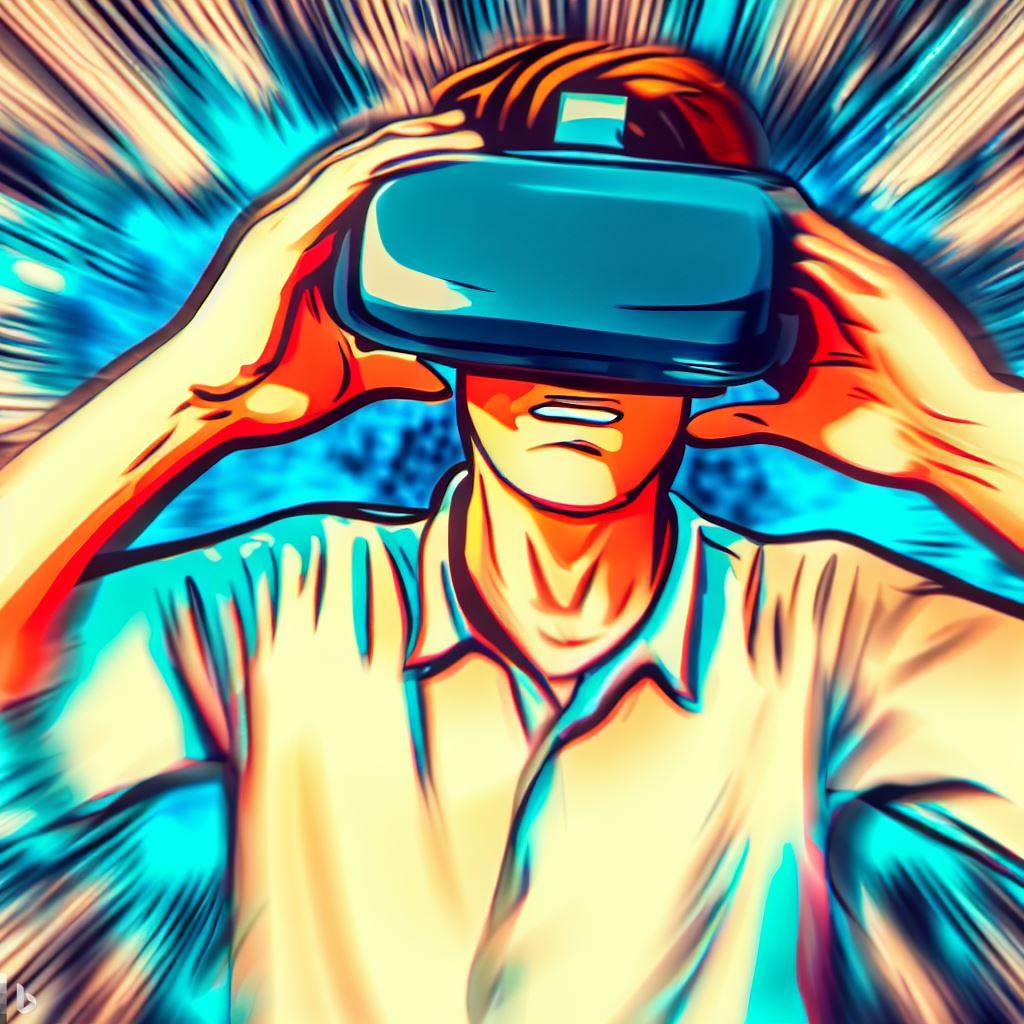The top disadvantages of virtual reality include VR sickness, high costs of investment, potential addiction, social isolation, and technical limitations. Being aware of these drawbacks and striking a balance between virtual and real-life experiences can help users enjoy the benefits of VR while staying grounded in reality.
Hey there, tech enthusiast! 😊 I’m sure you’ve heard all about the wonders and excitement of virtual reality (VR) by now. But, have you ever stopped to consider the not-so-glamorous side of this groundbreaking technology? Buckle up, my friend, because we’re about to take a deep dive into the Disadvantages of Virtual Reality: Top 10 Drawbacks to Consider.
In today’s world, VR has become a hot topic, with its jaw-dropping applications in gaming, entertainment, education, and even healthcare. It seems like the possibilities are endless! But, as with any technology, there’s always a flip side. I’m here to give you the real, unfiltered scoop on what you might not have known about VR.
Let’s kick things off with a quick story. Picture this: you’ve just bought the latest VR headset, and you’re ready to dive into a thrilling new adventure. You put on the headset, and suddenly, you’re transported to a breathtaking world, unlike anything you’ve ever seen before. At first, it feels like a dream come true. But then, you start to feel a little queasy, and before you know it, you’re sweating and on the verge of tossing your cookies 🍪 (and not the browser kind!).
Sound familiar? Well, that’s just one example of the potential drawbacks of virtual reality. But hey, don’t be too bummed out! I’m going to guide you through the Top 10 Disadvantages you should be aware of, so you can make an informed decision about whether or not to embrace this brave new world of VR.
Throughout this article, we’ll cover everything from the dreaded “VR sickness” to potential addiction and even the sky-high costs of VR technology. We’ll explore each disadvantage in-depth, providing you with valuable insights and food for thought.
Are you ready to take the red pill and uncover the truth about virtual reality? Let’s get started! 🚀
VR Sickness: When Virtual Worlds Make You Queasy
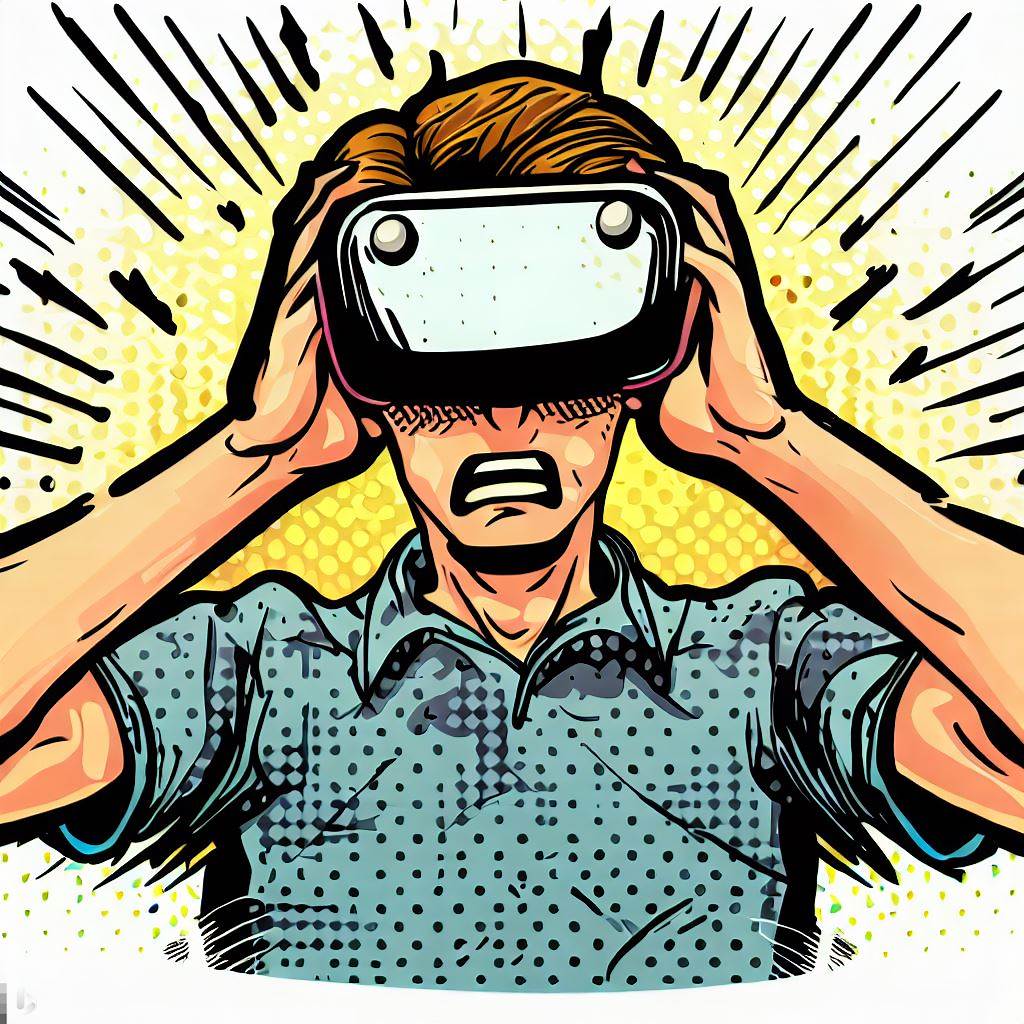
Ah, VR sickness, the not-so-pleasant side effect of diving headfirst into virtual worlds. You may have experienced it, or you may have heard stories of friends who have. Either way, it’s a real (and sometimes nauseating) issue. But what exactly causes this pesky phenomenon?
Motion Sickness in the Virtual Realm
It turns out, VR sickness is quite similar to motion sickness, which occurs when your brain receives conflicting information from your senses, causing dizziness and nausea. In the virtual world, your eyes see movement, while your inner ear and body don’t sense any motion. This mismatch confuses your brain and can lead to the dreaded VR sickness.
Factors that Contribute to VR Sickness
There are a few factors that can make VR sickness more likely or more severe:
- Low-quality graphics or frame rates: If the visuals in a VR experience aren’t smooth or realistic, it can exacerbate the sensory mismatch that leads to VR sickness.
- Lack of control: When you have little control over your movements in the virtual environment, your brain struggles to anticipate the motion, making it more challenging to adapt.
- Prolonged use: Spending too much time in VR can increase your chances of feeling sick, as the sensory mismatch accumulates over time.
Combatting VR Sickness
Feeling a bit queasy just thinking about it? Fear not! There are some steps you can take to reduce the likelihood of VR sickness:
- Take breaks: Give your brain a chance to reset by stepping out of the virtual world for a few minutes every hour or so.
- Start slow: Ease into VR experiences by trying shorter, less intense sessions before progressing to more complex and immersive ones.
- Stay cool and hydrated: Make sure to drink water and maintain a comfortable temperature in your gaming area, as dehydration and overheating can worsen VR sickness symptoms.
- Seated experiences: Opt for seated VR experiences, which can help minimize the sensory mismatch and give you a more stable environment.
While VR sickness can be an unwelcome side effect of engaging with virtual reality, understanding its causes and taking preventative measures can help you enjoy your virtual adventures without feeling green around the gills. So go ahead, step into the world of VR, but remember to do so responsibly! 🎮
The High Cost of Virtual Reality: Is It Worth the Investment?

Virtual reality has come a long way since its inception, and with the advancements come some pretty hefty price tags. But is it really worth emptying your pockets for a taste of the virtual world? Let’s break down the costs associated with VR and weigh the pros and cons.
Hardware: The Backbone of Your VR Experience
First and foremost, let’s talk about the hardware. To immerse yourself in VR, you’ll need a VR headset and, in some cases, additional accessories. Here’s a quick rundown of the main types of VR systems and their costs:
- Standalone VR headsets: Devices like the Oculus Quest 2, which don’t require a separate computer or console, typically cost between $300 and $600.
- PC-based VR systems: Headsets like the Valve Index or HTC Vive, which connect to a powerful gaming computer, range from $600 to $1,000 or more.
- Console-based VR: PlayStation VR, for example, requires a PlayStation console and costs around $300 to $500.
Notice how those dollar signs keep adding up? But wait, there’s more! 😲
The Hidden Costs: Software, Accessories, and Upgrades
Once you’ve got your shiny new VR headset, you’ll need software to make the magic happen. Games and apps can vary widely in price, from free to $60 or more for premium titles.
Additionally, you might find yourself needing (or wanting) various accessories to enhance your VR experience, such as:
- VR controllers
- Comfortable headphones
- External sensors (for some PC-based systems)
- Charging docks and stands
Finally, let’s not forget about the potential need for upgrades down the line. As VR technology evolves, you may find yourself wanting to upgrade your headset or computer hardware to keep up with the latest advancements.
Balancing Costs with Benefits: Is It Worth It? 🤔
When it comes to determining whether the investment in VR is worth it, you’ll need to consider your personal preferences and interests.
Ask yourself:
- How often will I use VR? If you’re a casual gamer or user, the high costs may not be justifiable. On the other hand, if you’re an avid enthusiast, the investment could be worth it.
- Do I already have compatible hardware? If you already own a powerful gaming computer or console, the additional cost of a VR headset might be more manageable.
- What are my expectations for VR experiences? If you have high expectations for graphics, immersion, and interactivity, you may be more willing to pay for top-tier VR systems.
At the end of the day, only you can decide if the costs associated with virtual reality are worth the investment. Consider your individual needs, interests, and budget before diving into this fascinating (but potentially expensive) world of immersive experiences. 🌐
Addiction Alert: When Escaping Reality Goes Too Far
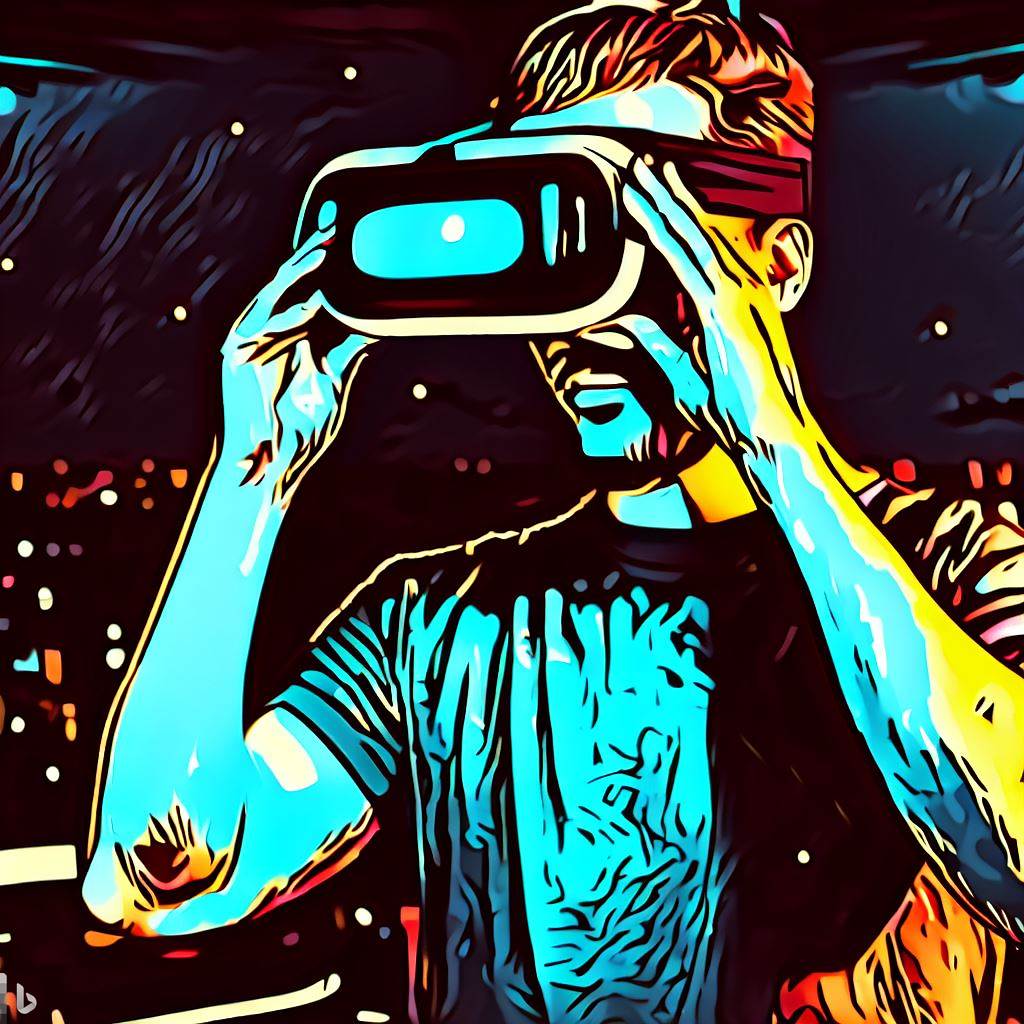
We’ve all heard the saying, “too much of a good thing can be a bad thing.” Unfortunately, this can also apply to virtual reality. As immersive and captivating as VR experiences can be, there’s a risk of becoming too attached to these virtual worlds and losing touch with reality. Let’s explore the potential for addiction and the signs to watch out for.
The Allure of Virtual Worlds
Virtual reality offers an escape unlike any other. By transporting users to different worlds, VR can provide a level of immersion that traditional media can’t match. For some, this escape can be therapeutic, educational, or simply a fun way to unwind. However, for others, it can become a crutch or an unhealthy coping mechanism.
When people begin to rely on VR to avoid facing real-life problems or emotions, they may develop an unhealthy dependence on the technology. This can lead to a variety of negative consequences, such as:
- Neglecting personal relationships
- Ignoring responsibilities
- Physical health issues from prolonged inactivity
- Financial problems due to excessive spending on VR hardware, software, and accessories
Recognizing the Warning Signs
It’s essential to be aware of the signs that might indicate a developing addiction to virtual reality. Keep an eye out for these red flags:
- Increasingly prioritizing VR over real-life activities: If you notice that you or a loved one is consistently choosing VR experiences over social, work, or family commitments, it could be a sign of a growing problem.
- Feeling irritable or anxious when not using VR: Experiencing withdrawal-like symptoms when not engaged in virtual reality may indicate a dependence on the technology.
- Using VR as an escape from real-life problems: If you find yourself turning to VR as a means of avoiding or escaping real-life issues, this could be a sign of an unhealthy relationship with the technology.
Maintaining a Healthy Balance
To prevent VR addiction, it’s crucial to establish and maintain a healthy balance between virtual and real-world experiences. Here are a few tips to help you stay grounded:
- Set limits on your VR usage: Allocate a specific amount of time for VR experiences and stick to it.
- Engage in a variety of activities: Make sure to participate in other hobbies, social events, and physical activities outside of virtual reality.
- Stay connected with loved ones: Regularly communicate with friends and family to maintain strong connections and support networks.
Virtual reality can be an incredible tool for entertainment, education, and even personal growth. However, it’s essential to remain aware of the potential risks and maintain a healthy balance to ensure that escaping reality doesn’t go too far. Stay mindful, and enjoy your virtual adventures responsibly! 🌟
Social Isolation: The Hidden Consequence of Immersive Experiences
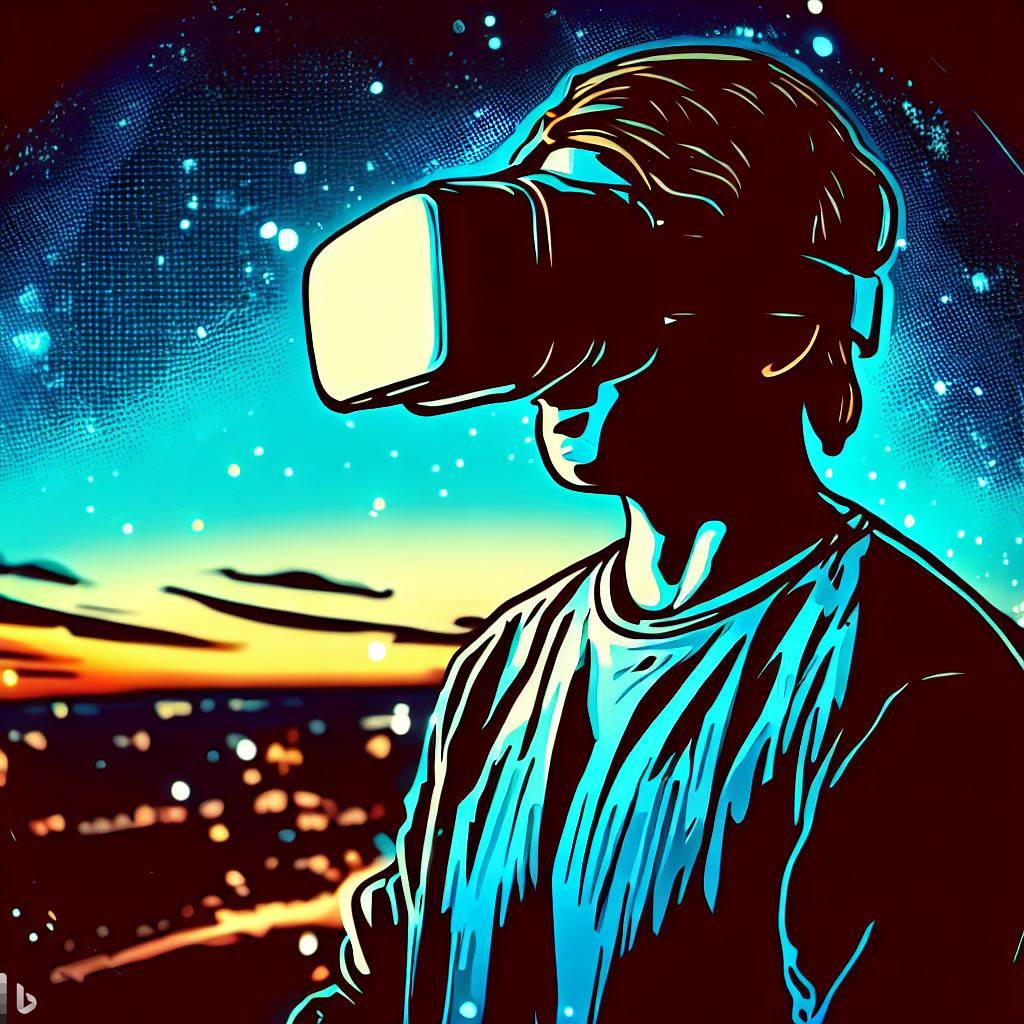
While virtual reality offers mind-blowing experiences and a whole new level of immersion, there’s a hidden downside that we should all be aware of: social isolation. With the rise of VR technology, concerns have emerged about the potential for users to become more disconnected from their real-life social circles. Let’s delve into this topic and discuss ways to maintain healthy social connections while enjoying VR.
The Double-Edged Sword of Immersion
One of the main selling points of virtual reality is its ability to fully immerse users in new and exciting worlds. However, this same quality can also make it easier for users to become detached from their real-life relationships and social interactions. When users become engrossed in virtual environments, they may inadvertently distance themselves from friends and family, leading to feelings of isolation and loneliness.
The Paradox of VR Social Experiences
Ironically, VR technology has also given rise to social experiences designed to connect people across vast distances. Users can meet up with friends or make new connections in virtual spaces, attend events, or even work together in shared environments. However, while these VR-based interactions can provide a sense of connection, they often lack the depth and emotional nuances of real-life interactions. As a result, users may feel connected in the virtual world but still experience a sense of isolation in their everyday lives.
Staying Connected in a Virtual World
It’s essential to recognize the potential for social isolation as a consequence of immersive VR experiences and take steps to maintain healthy connections with friends and family. Here are some tips to help you strike a balance:
- Schedule regular social activities: Make an effort to plan regular real-life social outings or gatherings with friends and family, ensuring that you maintain strong connections outside of the virtual world.
- Set boundaries for VR usage: Establish limits on the amount of time you spend in VR and stick to them, prioritizing real-life social interactions.
- Use VR as a supplement, not a replacement: While virtual social experiences can be enjoyable and convenient, remember that they should not replace real-life connections. Use VR to supplement your social life, but don’t rely on it as your sole means of interaction.
By being mindful of the potential for social isolation and taking proactive steps to maintain real-life connections, you can enjoy the wonders of virtual reality without sacrificing the vital bonds that keep us grounded in our everyday lives. Stay connected, and embrace both the virtual and the real worlds with open arms! 🤗
Technical Glitches and Limitations: VR’s Imperfect Performance
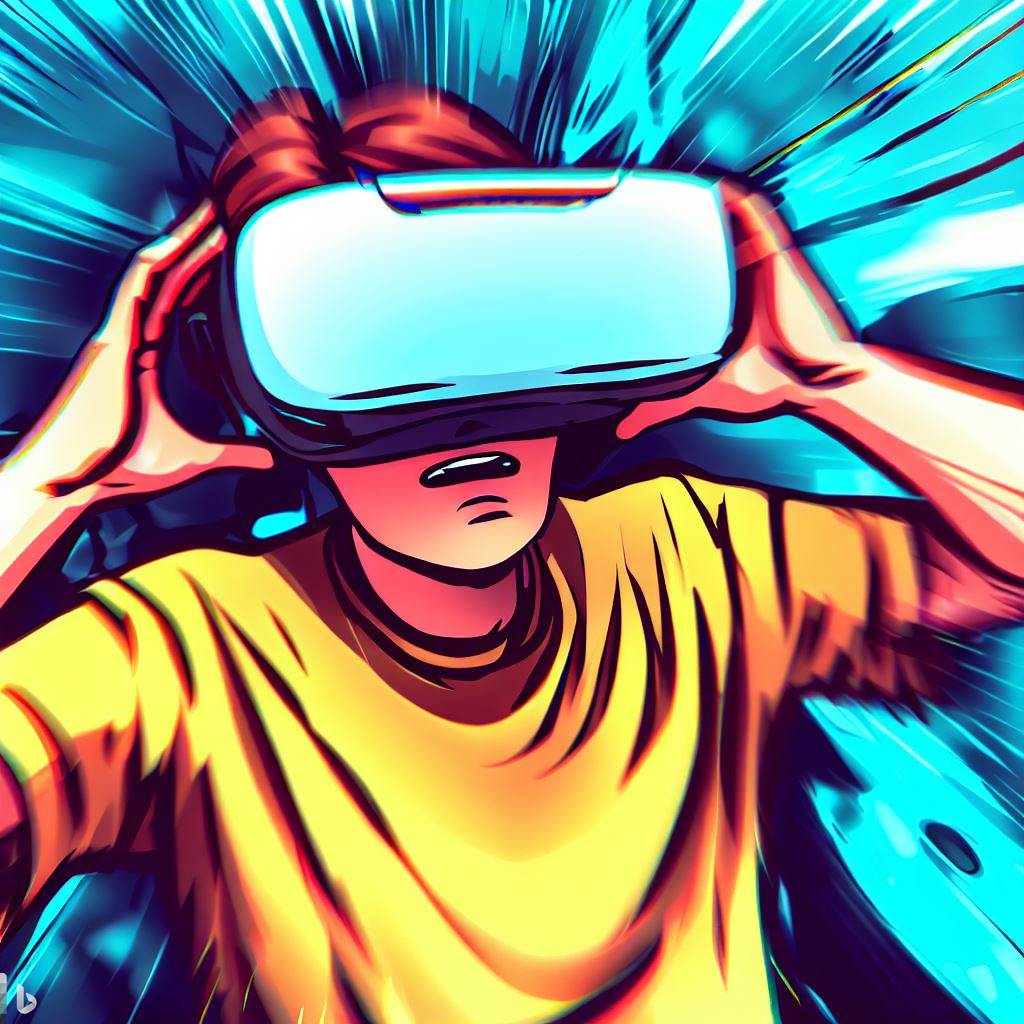
Alright, it’s time to face the cold, hard truth: virtual reality, as mesmerizing as it may be, isn’t perfect. That’s right, I said it! While VR has come a long way in recent years, it still has its fair share of technical glitches and limitations that can put a damper on your experience. So, let’s dive into some of the most common issues and explore how they might impact your virtual adventures.
The Dreaded Lag Monster 🐲
Imagine this: you’re in the heat of an epic VR battle, and suddenly, everything starts moving in slow motion. No, you haven’t magically gained superpowers; you’ve just encountered the dreaded lag monster. Lag, or latency, refers to delays in the communication between your VR headset, accessories, and the system running the experience.
Why does lag matter? Well, even slight delays can disrupt the sense of immersion, making your virtual world feel less responsive or realistic. Worse still, lag can contribute to VR sickness by creating a disorienting mismatch between your movements and the visuals displayed. Yikes!
Compatibility Catastrophes 💔
Not all VR systems are created equal, and sometimes, compatibility issues can arise. You might find that your favorite VR game isn’t available on your chosen headset, or that your PC’s hardware isn’t quite up to snuff to run the latest VR experiences. It’s like trying to fit a square peg into a round hole – frustrating and disappointing!
The Limits of Virtual Interaction 👋
As advanced as VR controllers and tracking systems have become, they still can’t replicate the full range of human movement and interaction. For instance, complex hand gestures or intricate object manipulation can be challenging to execute in virtual environments. This can lead to moments of frustration and a less-than-seamless experience.
Keeping Up with the Virtual Joneses 🚀
Finally, there’s the issue of keeping up with the rapid pace of VR technology advancements. Just when you think you’ve got the latest and greatest headset, a new model appears on the horizon, boasting better graphics, improved tracking, or other tantalizing features. For the average consumer, staying on the cutting edge can be both exhausting and expensive!
Embracing the Imperfections 🤗
So, how can we deal with the technical glitches and limitations of VR? Here are a few suggestions:
- Be patient: As the technology continues to evolve, many of these issues will likely improve over time. Hang in there!
- Research before you buy: Do your homework and read reviews to ensure that you’re investing in a VR system that best suits your needs and preferences.
- Adjust your expectations: Understand that VR is still a developing technology and that occasional hiccups are par for the course.
While virtual reality may not be flawless, it’s still a fantastic and groundbreaking technology that has the potential to revolutionize the way we interact with digital content. Embrace the imperfections, and remember that even with its glitches, VR can offer truly unforgettable experiences! 🌌
Conclusion
There’s no denying that virtual reality has the power to captivate and amaze us, transporting us to new worlds and offering unparalleled experiences. However, as we’ve explored, there are also some potential drawbacks and challenges that come with embracing this technology.
From the risk of VR sickness to the high costs of investment, the potential for addiction, social isolation, and technical limitations, it’s essential to be aware of these factors as we navigate the exciting realm of virtual reality.
By recognizing these potential pitfalls and taking proactive steps to maintain a healthy balance between the virtual and real worlds, we can fully enjoy the wonders of VR while staying grounded in our everyday lives. Stay curious, stay connected, and above all, have fun exploring the ever-evolving world of virtual reality! 🎉

